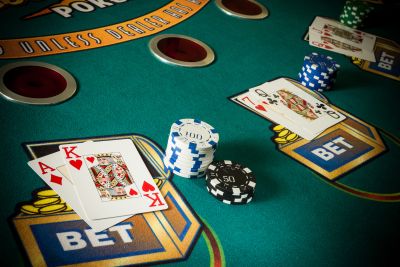
Slot and blackjack players are often wary of trying poker. They don't really know the rules of the game and they are afraid of visiting a poker room because they don't want to make a fool out of themselves.
There is no reason for such fear.
The rules for playing Texas Hold'em, limit and no-limit, are easy to understand. I have long advocated slot players to expand their horizons and include poker as one of their casino games. Here are some of the basic rules and strategies to make you more familiar with how the game works.
Each player is dealt two cards after which there is a round of betting. The best two starting cards are pocket aces. After a round of betting, during which there is a limit of four races, the dealer 'flops' three cards which can be played with the player's two hole cards.
Another round of betting ensues with four maximum races. The dealer then turns over another community card which all the players can use to their advantage. Following a round of betting, the dealer turns over the fifth 'river' card for a final round of betting.

While some Hold'em players will play almost any two cards hoping for a miracle flop, this is not good strategy. The higher your cards are, the better are your chances of prevailing.
Connected cards like queen-jack suited are also good starting cards. You want to give yourself as many 'outs' as possible when the flop comes.
Texas Hold'em is a very risky game and when you play low value cards, you add to the risk. When you get high cards -- ace/king or ace/queen suited, for example -- you should generally raise to thin the field.
Before you go to a poker room, you should practice playing at home. After dealing a few hundred hands, you can generally get a good feeling on what starting hands you would want to play.
Generally your raising hands are pocket 10s or better, along with high suited connectors. Ace/king is generally worth a raise. If you hit an ace or king on the flop, you will generally be ahead of the field and can act accordingly.
The more players you allow in the pot, the slimmer your chances of winning. You should also take advantage of position. When you are either behind the button or one position to the right of the button, you can relax your opening hand standards.
I will sometimes play almost any two cards behind the button. Then if the other players check, I can bet almost any hand dealt me. While some players practice check-raise, you will generally win the pot with such a play.
To become a good Texas Hold'em player, you need practice, practice and more practice. It will probably cost you some money at the beginning -- every poker player has to pay his dues -- but your game should improve with age.
Play your players as well as your cards. If a player is very conservative and suddenly comes out betting or raising, it is highly unlikely that this person is bluffing. Remember that poker hands are like city buses -- you don't have to rush to catch one since one will be coming along shortly. Limit the number of hands you play and play your good hands aggressively.
Your own temperament should determine whether you play limit or no-limit Hold'em. If you can stand the pressure of a big raise, then try no limit. If you can't, stick to limit Hold'em.
The buy-ins are $30 for a $3-6 game, $40 for a $4-8 game and $100 for a $1-2 no-limit game. Good luck. Let me know how you do.
Author: Geno Lawrenzi Jr.
(Geno Lawrenzi Jr. is an international journalist, magazine author and ghostwriter and poker player who lives in Phoenx, AZ. He has published 2,000 articles in 50 magazines and 125 newspapers. If you want to share a gambling story or book idea with him, send an email to glawrenzi@gmail.com ).
Your feedback
Please enter your comment.
Your comment is added.




